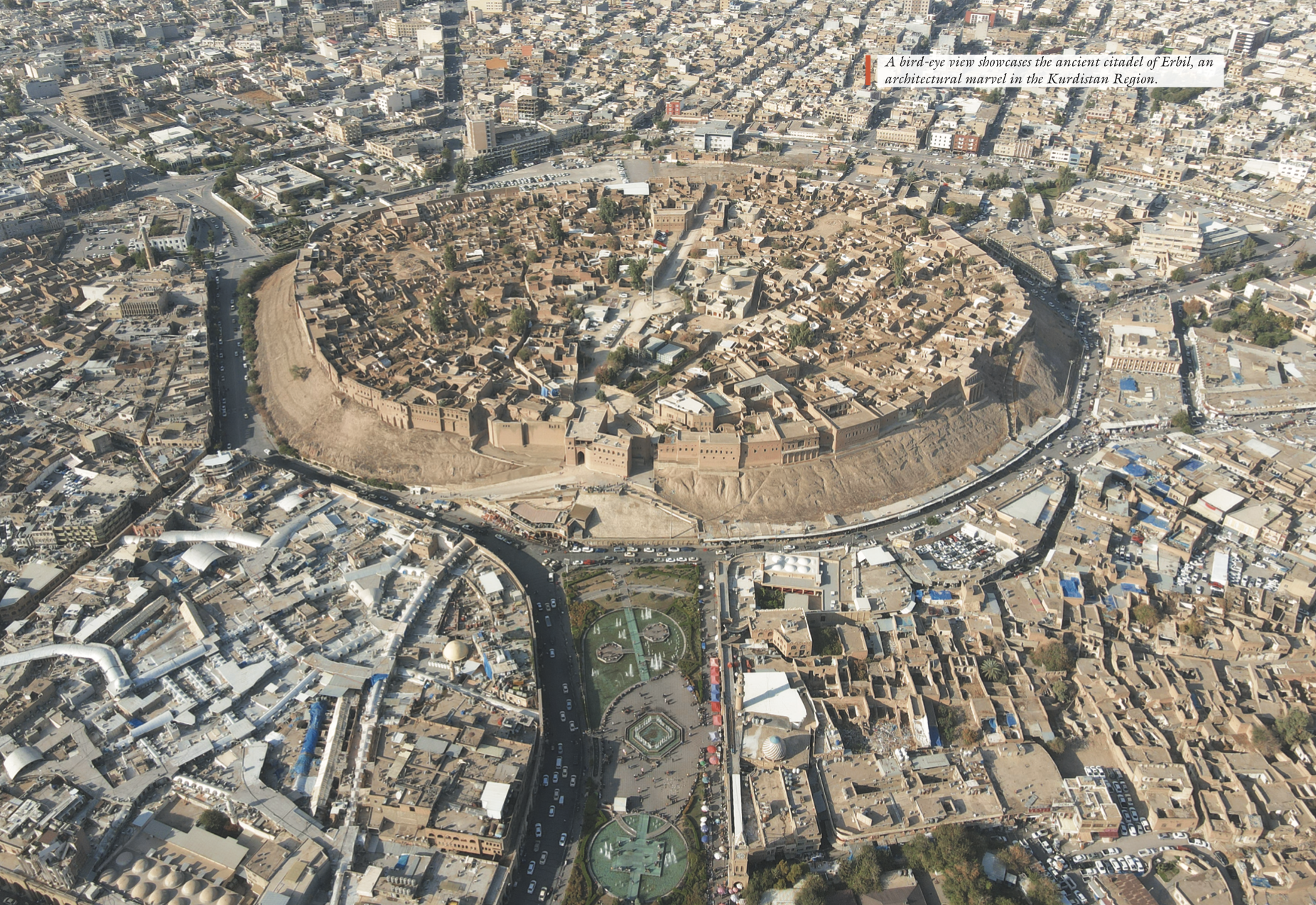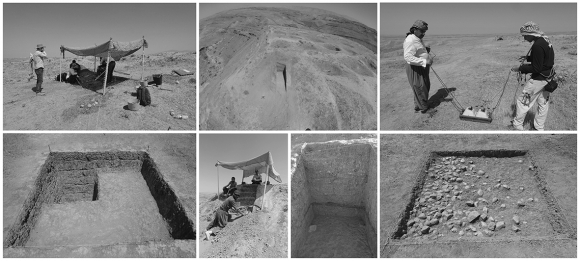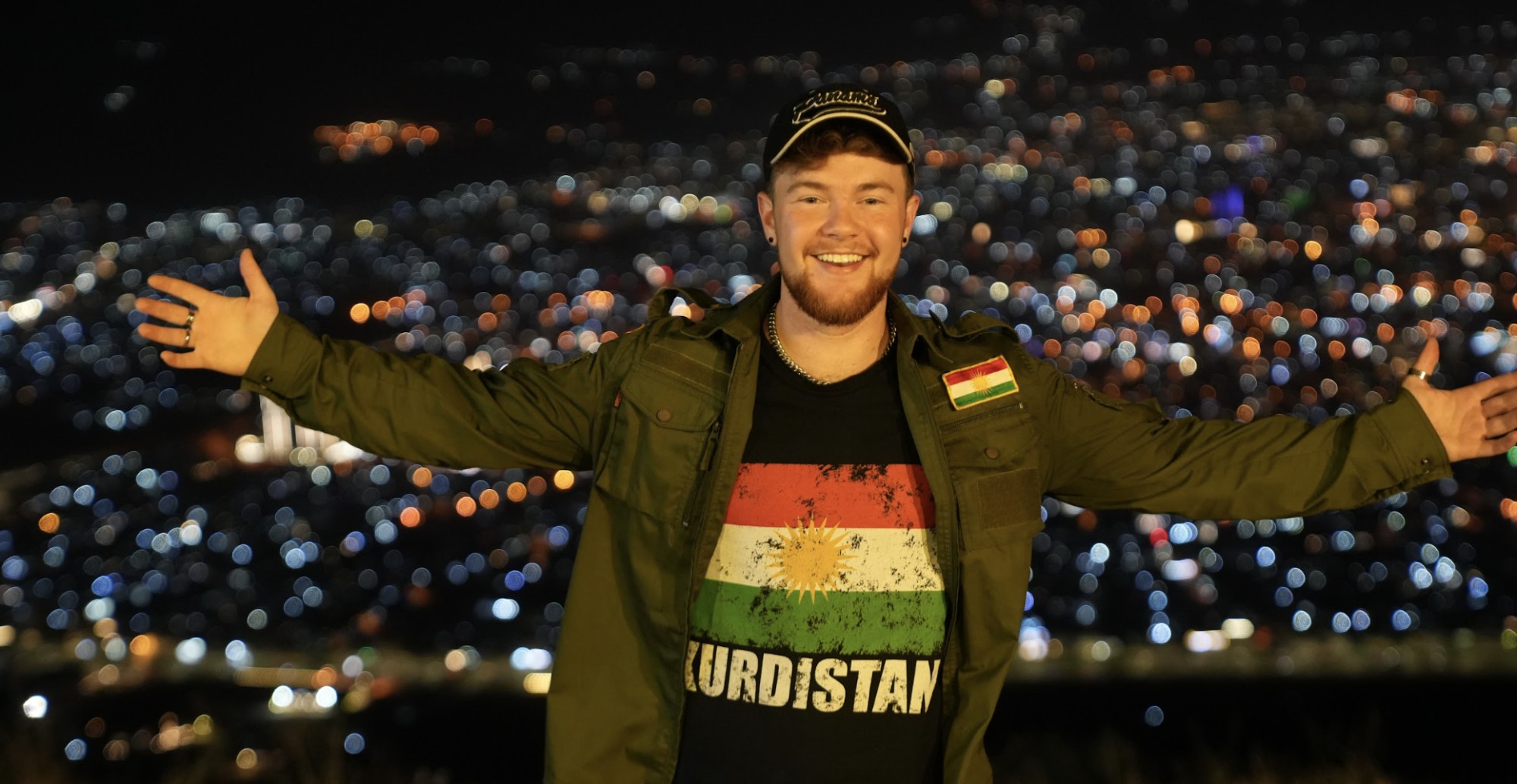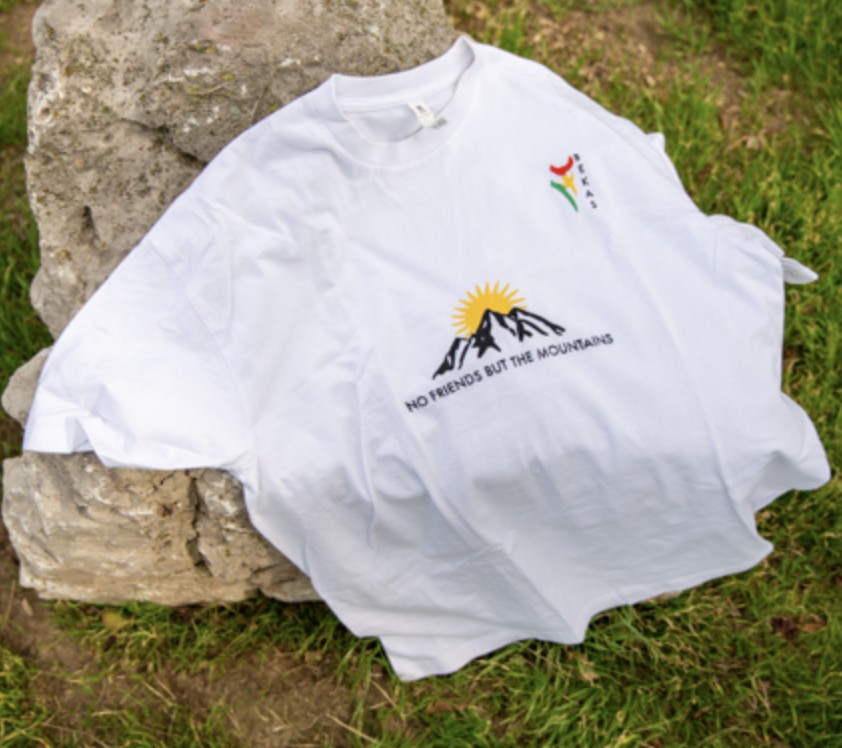Let’s embark on an extraordinary journey through the archaeological wonders of Kurdistan Region of Iraq (KRI). In this comprehensive trip, I will explore the majestic and captivating Erbil Citadel, the mesmerizing Shanidar Cave, the prehistoric sites of Jarmo and Bestansur, and the archaeological wonders of Qalat Said Ahmadan. These sites offer a window into the cultural heritage of the Kurdistan Region, which boasts a rich history spanning thousands of years, allowing us to connect with our ancestors. I will guide you to unravel the mysteries and marvel at the remarkable achievements of these historical landmarks.

A citadel standing proudly in the heart of Erbil
The Erbil Citadel is an ancient city center and a symbol of pride for the Kurdish people. With a history dating back over 6,000 years, it is one of the oldest continuously inhabited cities in the world and stands as a testament to human resilience and endurance. It has been a UNESCO World Heritage Site since 2014.
Throughout its history, Erbil Citadel has been a significant center for various civilizations, including the Assyrian Empire, and has witnessed the rise and fall of empires, the spread of Christianity, and the Muslim conquest of 642. The citadel’s towering mud-brick walls, narrow alleys, and historic buildings – including palaces, mosques, and schools – offer a glimpse into the city’s past.
The citadel’s strategic location has also made it a hub for trade and cultural exchange throughout history. Over the years, it has suffered damage and neglect but ongoing restoration efforts that have been undertaken since 2007 by the High Commission for Erbil Citadel Revitalization are ensuring its preservation for generations to come.
Erbil Citadel is not only important to the local community but also holds outstanding universal value for all of humanity. It serves as a reminder of the city’s rich history, resilience, and continuity. Today, it attracts thousands of visitors daily, allowing them to experience the heritage and cultural significance of the site.

A subterranean wonder hidden beneath the rugged mountains
With a history stretching tens of thousands of years, the mesmerizing Shanidar Cave is a natural marvel that showcases the awe-inspiring beauty of nature. With its vast chambers, stalactites, and stalagmites, the cave offers a captivating experience for adventurers and nature enthusiasts alike. Exploring the depths of Shanidar Cave is like stepping into a hidden world, where time stands still, and the wonders of the underground realm unfold.
The cave was once a refuge for ancient peoples, serving as a shelter from harsh weather conditions and potential threats. In 1960, the archaeologist Ralph Solecki from the United States unearthed a burial site within Shanidar Cave, revealing the remains of 35 individuals interred over 10,000 years ago. This cemetery was found at the end of four seasons of excavation, during which time Solecki discovered something even more extraordinary: the partial remains of ten Neanderthal men, women, and children. Using mid-20th century techniques, the archaeological team could only date them to over 45,000 years ago.
Shanidar Cave also houses over 30 “proto-Neolithic” skeletons dating back to approximately 10,000 BC. One of these skeletons is displayed at the Smithsonian National Museum of Natural History in Washington. D.C., having traveled over 6,000 miles from the KRI.
The cave’s intricate formations and ethereal atmosphere evoke a sense of mystery and wonder. Guided tours take visitors through its chambers, highlighting the geological formations and sharing fascinating stories and myths associated with the cave.

Landscape and early farming at Neolithic sites in Charmo village, Sulaymaniyah, Kurdistan Region
The cradle of agriculture
Jarmo and Bestansur, two ancient archaeological sites located in the Sulaymaniyah Governorate, hold the key to unraveling the beginnings of human civilization. Dating back thousands of years, these Neolithic settlements offer valuable insights into the human transition from hunter-gatherer societies to sedentary agricultural communities. Jarmo, also known as Qalat Jarmo, is an archaeological site that showcases the earliest signs of settled agricultural life.
Excavations led by University of Chicago archaeologist Robert Braidwood uncovered circular mud-brick houses, communal buildings, and evidence of early domesticated crops at Jarmo. These findings paint a vivid picture of the daily lives of the ancient inhabitants and provide invaluable knowledge about the birth of farming practices.
Bestansur, on the other hand, stands as a remarkable example of an elaborate architectural ensemble from a crucial period in human history. The site, protected by law, boasts intact archaeological layers dating back to between 7,700 and 7,100 BC. It is the only archaeological site in the KRI that provides evidence for that period, making it globally significant in terms of its cultural and historical importance.
Both Jarmo and Bestansur offer a glimpse into the early stages of settled agricultural life and serve as important sites for understanding the Neolithic period. Beyond their historical significance, they also represent the birth of human ingenuity and the development of the social hierarchies that shape our modern societies. The inclusion of Bestansur on the UNESCO World Heritage Tentative List has helped to further ensure its protection and conservation. As an exceptional prehistoric site, it stands out among the most important historic sites in the Kurdistan Region and Iraq.
The two villages are, moreover, not just archaeological sites; they are windows into the past, offering a bridge between our hunter-gatherer ancestors and the agricultural revolution that transformed the world. Through continued research and preservation efforts, we can continue to uncover the secrets hidden within these ancient settlements and gain a greater appreciation for the remarkable journey of human civilization.

Qalat Said Ahmadan: A fortified hilltop settlement
Qalat Said Ahmadan is an important archaeological site located in the Peshdar Plain, north of Qaladiza, that stands as a reminder of the strategic importance of fortified settlements in ancient times.
This hilltop stronghold, believed to date back to the second millennium BC, provides a glimpse into the architectural and military advancements of the period. The remains of its defensive walls, towers, and gateways reveal the site’s significance as a hub for regional trade and as a defensive bastion. Excavations have unearthed artifacts that shed light on the daily lives, trade networks, and interconnectedness of ancient civilizations.
Qalat Said Ahmadan’s location provided a vantage point for the ancient inhabitants to monitor surrounding areas and defend against potential threats. Moreover, the site’s remains offer insight into the urban planning, fortification techniques, and economic activities of the time. Discoveries such as pottery, jewelry, and tools showcase the cultural richness and trade connections that flourished in this region. This remarkable site provides tangible evidence of the rich history and cultural significance of Kurdistan.
As we explore the Erbil Citadel, Shanidar Cave, Jarmo, Bestansur and Qalat Said Ahmadan, it is crucial to emphasize the importance of preserving these archaeological wonders. Local authorities, along with international organizations, are dedicated to protecting and conserving these sites for future generations. By safeguarding our heritage, we ensure that the stories of our ancestors continue to be shared and appreciated.
Goran Shakhawan is a Kurdish-American journalist and author based in the United States. He covered news for several Kurdish news outlets and was a former senior correspondent for Kurdistan24 in Erbil and Washington D.C. He has published several books in Kurdish.

